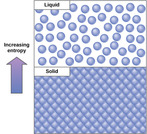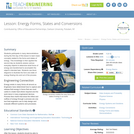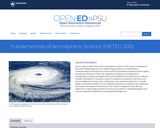
13 Results


Biology is designed for multi-semester biology courses for science majors. It is grounded on an evolutionary basis and includes exciting features that highlight careers in the biological sciences and everyday applications of the concepts at hand. To meet the needs of today’s instructors and students, some content has been strategically condensed while maintaining the overall scope and coverage of traditional texts for this course. Instructors can customize the book, adapting it to the approach that works best in their classroom. Biology also includes an innovative art program that incorporates critical thinking and clicker questions to help students understand—and apply—key concepts.
- Subject:
- Biology
- Life Science
- Material Type:
- Full Course
- Provider:
- Rice University
- Provider Set:
- OpenStax College
- Date Added:
- 08/22/2012

- Subject:
- Biology
- Life Science
- Material Type:
- Unit of Study
- Provider:
- Rice University
- Provider Set:
- OpenStax College

- Subject:
- Applied Science
- Biology
- Life Science
- Material Type:
- Module
- Date Added:
- 07/10/2017

By the end of this section, you will be able to:Discuss the concept of entropyExplain the first and second laws of thermodynamics
- Subject:
- Applied Science
- Biology
- Life Science
- Material Type:
- Module
- Author:
- Tina B. Jones
- Date Added:
- 08/15/2019

By the end of this section, you will be able to:Discuss the concept of entropyExplain the first and second laws of thermodynamics
- Subject:
- Applied Science
- Biology
- Life Science
- Material Type:
- Module
- Date Added:
- 07/10/2017

The students participate in many demonstrations during the first day of this lesson to learn basic concepts related to the forms and states of energy. This knowledge is then applied the second day as they assess various everyday objects to determine what forms of energy are transformed to accomplish the object's intended task. The students use block diagrams to illustrate the form and state of energy flowing into and out of the process.
- Subject:
- Applied Science
- Chemistry
- Engineering
- Physical Science
- Physics
- Technology
- Material Type:
- Activity/Lab
- Lesson Plan
- Provider:
- TeachEngineering
- Provider Set:
- TeachEngineering
- Author:
- Jan DeWaters
- Susan Powers
- Date Added:
- 09/18/2014

Do you want to know more about atmospheric science? This course is designed to give both Meteorology and non-Meteorology students a comprehensive understanding of atmospheric science and the quantitative analytical tools to apply atmospheric science to their own disciplines. Students are introduced to fundamental concepts and applications of atmospheric thermodynamics, radiative transfer, atmospheric chemistry, cloud microphysics, atmospheric dynamics, and the atmospheric boundary layer. These topics are covered broadly but in enough depth to introduce students to the methods atmospheric scientists use to describe and predict atmospheric phenomena. The course is designed to be taken by sophomore meteorology students as well as by students in related disciplines who have an adequate mathematical and physical background.
- Subject:
- Atmospheric Science
- Physical Science
- Material Type:
- Full Course
- Provider:
- Penn State College of Earth and Mineral Sciences
- Author:
- Bill Brune
- Date Added:
- 10/07/2019

This course is an introduction to the principal concepts and methods of heat transfer. The objectives of this integrated subject are to develop the fundamental principles and laws of heat transfer and to explore the implications of these principles for system behavior; to formulate the models necessary to study, analyze and design heat transfer systems through the application of these principles; to develop the problem-solving skills essential to good engineering practice of heat transfer in real-world applications.
- Subject:
- Physical Science
- Physics
- Material Type:
- Full Course
- Provider Set:
- MIT OpenCourseWare
- Author:
- Varanasi, Kripa
- Date Added:
- 09/01/2015

This project includes three files: 1) a slide show presentation on thermochemistry (pptx file) 2) in-class activity sheet on thermochemistry questions (docx file) 3) in-class activity sheet with solutions (docx file). This set of files has been adapted for a science-major General Chemistry course from Chemistry: atom first (Openstax) and other various Open Education Resources. Main sources for this set of slides are: 1) Chemistry: atom first (Openstax ); 2) Chemistry LibreTexts Library; 3) Wikipedia commons; 4) US- Energy information administration.. Various links to online available resources are included in the text.
- Subject:
- Applied Science
- Chemistry
- Engineering
- Environmental Science
- Physical Science
- Material Type:
- Homework/Assignment
- Lesson
- Module
- Date Added:
- 07/17/2019

Doelstelling van dit college is een introductie te geven in de theorie van de Thermodynamica, een van de fundamentele werktuigbouwkunde vakken. De Thermodynamica behandelt energie vraagstukken en relaties tussen de eigenschappen van materialen. In dit college wordt voor een ingenieurs aanpak van de Thermodynamica gekozen: onderwerp van studie zijn systemen en hun interactie met de omgeving. Naast gesloten systemen krijgen open systemen veel aandacht. Thermodynamica wordt, in combinatie met stromingsleer en warmte- en stofoverdracht, ingezet om bijvoorbeeld automotoren, turbines, compressoren, pompen, elektriciteit opwekkinginstallaties, cryogenische-, koel- en klimaat-installaties en duurzame energieconversie installaties te analyseren en ontwerpen. De beginselen van de Thermodynamica maken het mogelijk om de ontwerpen van energie gerelateerde werktuigbouwkundige apparaten en systemen te optimaliseren voor het betreffende doel.
- Subject:
- Applied Science
- Engineering
- Material Type:
- Assessment
- Homework/Assignment
- Lecture
- Lecture Notes
- Reading
- Provider:
- Delft University of Technology
- Provider Set:
- TU Delft OpenCourseWare
- Author:
- B.J. Boersma
- Date Added:
- 10/26/2014

This subject deals primarily with equilibrium properties of macroscopic and microscopic systems, basic thermodynamics, chemical equilibrium of reactions in gas and solution phase, and macromolecular interactions.
- Subject:
- Applied Science
- Biology
- Chemistry
- Engineering
- Life Science
- Physical Science
- Physics
- Material Type:
- Full Course
- Provider Set:
- MIT OpenCourseWare
- Author:
- Bawendi, Moungi
- Field, Robert
- Griffith, Linda
- Hamad-Schifferli, Kim
- Date Added:
- 09/01/2005

The basic objective of Unified Engineering is to give a solid understanding of the fundamental disciplines of aerospace engineering, as well as their interrelationships and applications. These disciplines are Materials and Structures (M); Computers and Programming (C); Fluid Mechanics (F); Thermodynamics (T); Propulsion (P); and Signals and Systems (S). In choosing to teach these subjects in a unified manner, the instructors seek to explain the common intellectual threads in these disciplines, as well as their combined application to solve engineering Systems Problems (SP). Throughout the year, the instructors emphasize the connections among the disciplines.
- Subject:
- Applied Science
- Engineering
- Physical Science
- Physics
- Material Type:
- Full Course
- Provider Set:
- MIT OpenCourseWare
- Author:
- Craig, Jennifer
- Drela, Mark
- Hall, Steven
- Lagace, Paul
- Lundqvist, Ingrid
- Naeser, Gustaf
- Perry, Heidi
- Radovitzky, Raúl
- Waitz, Ian
- Young, Peter
- Date Added:
- 09/01/2005